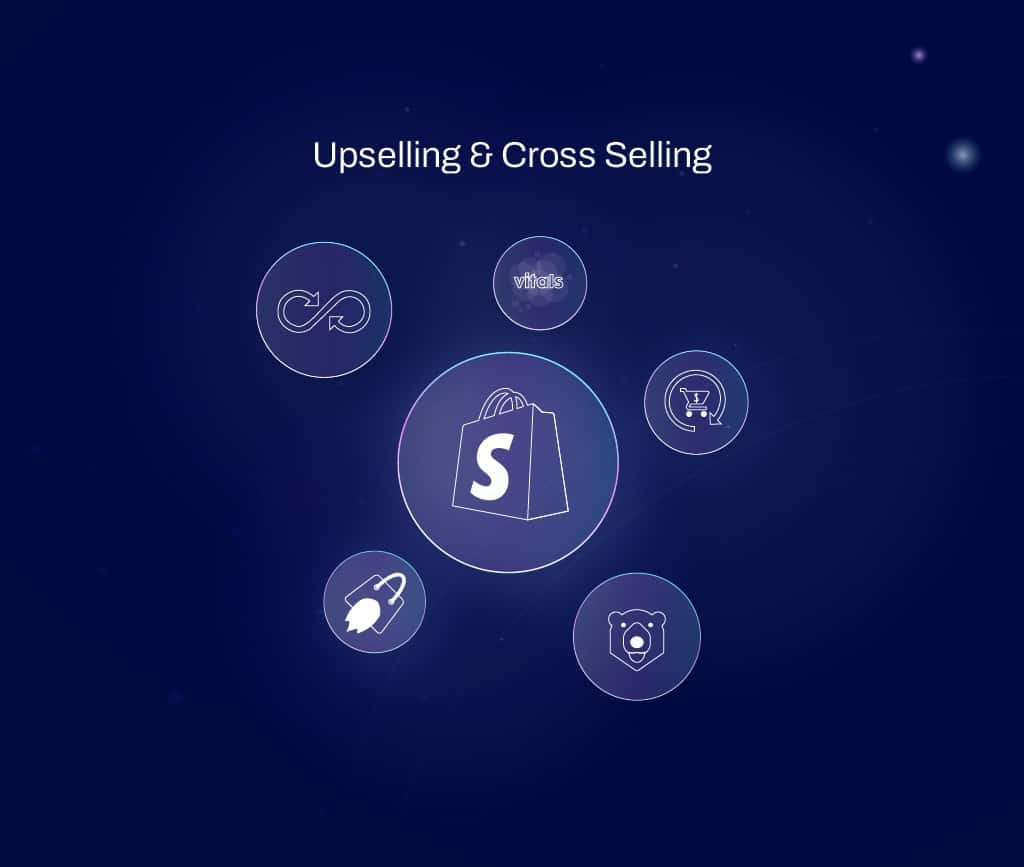Marketing And Sales
7 minute read
What Is Omnichannel Marketing and How Does Your Website Fit Into It?.
LAST UPDATED:
August 15, 2023


If you’ve been in the marketing world for a while, you may have heard of the term “omnichannel.”
It is a peculiar word not often understood by many — what does it mean and why should you care about it?
Digital marketers understand that to engage customers, they need to be where their target audience is.
As technology progresses and changes, so do the strategies necessary to reach that audience.
Omnichannel marketing is a modern approach that many organizations use. It considers all digital touchpoints within your company’s marketing strategy.
This article will explore omnichannel marketing, how it works, and why your website should utilize this strategy.
In a world where customers are increasingly connected and active across multiple channels, the traditional notion of a marketing or eCommerce conversion funnel is no longer enough.
Enter omnichannel marketing: a data-driven approach that considers the customer journey as a whole rather than individual touchpoints.
It connects all your customer interaction points and marketing channels, including website traffic, email campaigns, brick-and-mortar stores, ad campaigns, and more.
By understanding how customers move between channels and devices, businesses can create a more seamless and personalized experience that meets them where they are.
This helps to build loyalty and brand awareness and can lead to higher conversion rates and increased customer lifetime value.
In short, omnichannel marketing is about understanding your customer and delivering the right message through the right channel at the right time.
With the help of data and technology, it’s now possible to have a truly connected customer experience.
When you hear the term “omnichannel marketing,” it can be a bit overwhelming. While it sounds complex, it’s pretty simple.
Adopting an omnichannel approach gives you a broader perspective of the customer journey.
You start to see how various channels can create a cohesive experience between your customers and brand.
Below are some of the key advantages that come with omnichannel marketing.
Reaching a Greater Audience

An omnichannel marketing strategy allows you to reach a larger audience. You are no longer confined to one channel, such as your website or email list.
Instead, you can extend your message across multiple platforms and devices.
This means that customers have more opportunities to interact with your brand and get exposed to your content.
For example, social media networks can increase brand awareness and website traffic.
Increasing Profits
Since your audience is spread across multiple channels, you can effectively target them and generate more profits.
Using data to understand customer behavior, you can create personalized experiences that convert leads into customers.
This allows you to focus your marketing efforts on the proper channels and increase ROI.
When you are visible on several channels, you can increase the likelihood of customers buying from you as they switch between devices.
Increasing Customer Satisfaction

By utilizing technology to store and assess customer data, you can offer a more personalized touch that builds trust and encourages customers to return.
Plus, it’s easier for customers to find the information they need, as you’re more likely to be available on several channels.
This helps to increase customer satisfaction and loyalty, leading to solid, long-term relationships with your customers.
A great customer experience shouldn’t stop at just one touchpoint.
Creating a cohesive journey across channels will reduce customers’ frustration when switching devices, making it more likely they’ll continue doing business with you.
Overall, by giving your potential customer a chance to interact with you via several channels they will more likely to make a purchase from you!
Understanding how it works is vital if you’re considering implementing an omnichannel approach.
The Omnichannel Marketing Experience
Omnichannel marketing, in short, provides customer support and products or services through multiple channels while maintaining a consistent customer experience.
By providing a cohesive brand experience across all channels, you can remain consistent in the customer journey, whether they’re on their desktop or mobile device.
This also applies if you have a brick-and-mortar store that customers visit.
Not only should the omnichannel marketing experience be personalized for each customer, but it should also be easy for them to find what they need.
Content Is Created Equally
It’s important to create content that works across all platforms. This includes ensuring it is appropriately optimized and engaging enough for customers to interact with it.
Using analytics, you should also track customer behavior and preferences to tailor your content accordingly.
Analytics will help ensure customers get the best experience possible when interacting with your brand.
Creating brand guidelines will help keep your message and brand image consistent across all channels.
It is important because different types of content reach other people within your target audience, and you want them to have a cohesive experience with your brand.
If you’re like most business owners, you understand the importance of having a website.
Your website is often the first point of contact between you and your potential customers, so it’s essential to make sure that your site gives them a good impression.
However, simply having a website is no longer enough. In today’s competitive marketplace, you need to make sure that your site is optimized for omnichannel marketing.
Again, the key to successful omnichannel marketing is to create a seamless user experience regardless of the channel.
Your website or web design system needs to be designed with omnichannel marketing in mind.
Your website’s customer experience should be fluid and consistent, and it should be the final destination or last touchpoint for your potential customers.
For instance, this can be done by using a responsive design so that your website adapts to the device on which it is being viewed.
You can do a few things to ensure your website is ready for omnichannel marketing.
Create Shareable Content That Traces Back To Your Site

Creating content such as blog posts, marketing emails, and social media posts that trace back to your website is key.
Not only will this help you build a relationship with customers, but it can also help you increase your website’s search engine rankings.
In addition to reaching you on social media, email, and your website, customers should also be able to contact you through comments or direct messaging systems. This allows them to get their questions answered or follow up with any issues they may have.
Integrate a Call-to-Action (CTA)
If you want customers to take action, it’s important to give them a CTA on your web pages. This can be done through a contact form, an opt-in offer, or a link for more information.
By giving users multiple options and opportunities to engage with your website, you can increase conversions and ensure that customers have what they need to interact with your brand.
Including CTAs throughout your social media content can also be a great way to drive people back to your website.
Optimize Your Website for Mobile

Ensuring your website is optimized for mobile is crucial for omnichannel marketing. Mobile optimization ensures your website looks good and functions well on all devices, including smartphones and tablets.
More people are now visiting websites from their mobile devices than from desktops, according to Oberlo.
As of August 2022, more than 50% of web visits were from mobile devices, while 46% percent came from desktop computers.
If you want to succeed in omnichannel marketing, your website needs to be optimized for mobile users.
Customers use various internet devices today, so your website must be optimized for all of them.
Google’s mobile-friendly test can help you ensure your site is easy to view and navigate, no matter what device your customers use.
Optimizing your website for mobile enables customers to have a seamless experience regardless of the device they are using.
Create a Consistent Experience Across Channels
When designing your website, think about the customer journey and the steps you need to take to ensure their experience is smooth and uninterrupted.
For example, if you’re running a campaign on social media, ensure the message is consistent across all channels. The same can be said for other marketing efforts, such as email campaigns or SEO optimization.
By creating a consistent experience across all channels, customers will feel like they are interacting with the same brand. This will help you build trust and loyalty, which can positively affect sales.
Knowing your target audience is essential, but what you do to reach them is even more critical. An audience is valuable in any business if you can get them to interact with your brand.
You also can’t overstate the importance of communication and audience reach when connecting with your target consumers. This means being present on all platforms they might use and providing a smooth transition between them.
Omnichannel marketing gives customers a cohesive experience, whether on your website, mobile app, or in person. This involves ensuring your website is optimized for mobile devices so that people can use it easily regardless of phone or tablet type.
Customers can confidently interact with your brand when you have a website optimized for mobile and consistent customer experience across all channels. With the right strategies in place, you can ensure that your website fits into omnichannel marketing and helps to drive engagement with your target audience.
If you need help with web personalization and inbound marketing systems, reach out to us.
We have the experience needed to set your website up for success.
So what are you waiting for? Contact us today!
Get Memorable Insights.
Sign up to receive actionable web design advice directly in your inbox monthly.
Get Memorable Insights.
Sign up to receive actionable web design advice directly in your inbox monthly.
Author
Jeff Gapinski is the President of Huemor where he helps plan the long-term strategic growth of the agency. Jeff is passionate about UI/UX, demand generation, and digital strategy.
What Do You Think?
Have feedback? Maybe some questions? Whatever it is, we'd love to hear from you.








No comments found